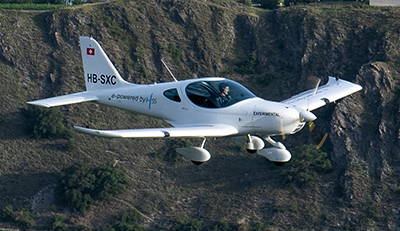RTX Ventures, the venture capital arm of Raytheon Technologies (NYSE: RTX), has made a minority investment in electric propulsion system company H55 to drive the development of electric aviation solutions. The investment in H55 aligns with Raytheon Technologies’ longstanding leadership in the development of innovative and sustainable propulsion technologies.

H55, a Swiss company, is a leading enabler of electric propulsion solutions and battery systems. The team has proven ability in developing, integrating and flight-testing electric propulsion systems, including Solar Impulse, the first solar-powered electric airplane to fly around the world.
“H55 is a key collaborator in our strategy for demonstrating the potential of hybrid-electric propulsion technology, which will be enhanced by this investment from RTX Ventures,” said Graham Webb, chief sustainability officer at Pratt & Whitney. “Together, H55 and Raytheon Technologies are advancing new technologies that will help achieve the aviation industry’s goal of reaching net zero CO2 emissions by 2050.”
As part of this investment, H55 will benefit from RTX Ventures’ guidance in supporting H55’s plans to accelerate electric propulsion solutions and battery systems. H55 is already working with the company to develop and demonstrate hybrid-electric propulsion technologies. RTX Ventures will also facilitate opportunities to work together on future product development.
“Receiving an investment from RTX Ventures is yet a further recognition of H55’s track record, expertise, and potential,” said André Borschberg, H55’s executive chairman. “With RTX Ventures, H55 will benefit from the potential opportunity to work with Raytheon Technologies on a range of projects that will enable us to intensify our offering, building-out a wide portfolio of products and solutions suitable for many customers and applications across the aviation industry.”
Working together, Raytheon Technologies and H55 will advance electric aviation and demonstrate the advantages of adopting sustainable technologies, which are more efficient and cost effective. This collaboration will further enable the development of state-of-the-art clean aviation mobility solutions.


